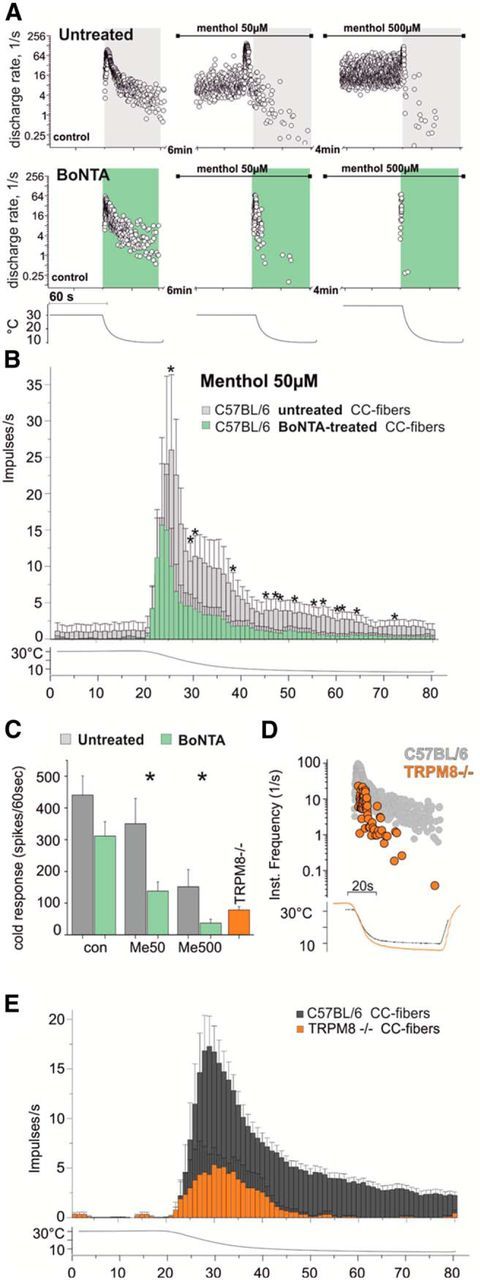Figure 9.

Menthol increases adaptation in BoNTA-pretreated monomodal cold receptors similar to coding deficits observed in TRPM8-deficient CC fibers. A, Original traces of CC fibers recorded from an untreated C57BL6 mouse skin–nerve preparation (top) and from a BoNTA-pretreated skin (bottom) shown as instantaneous discharge rates in response to a 60 s cooling stimulus. Menthol 50 μm was present throughout a second cold stimulus, and menthol 500 μm throughout the third stimulus. Bottom, Temperature time course. B, Averaged histogram in bins of 1/s illustrating the effect of menthol 50 μm on the cold response of CC fibers from untreated skins (gray, n = 8 (50 μm) and 7 (500 μm)) and BoNTA-treated skins (green, n = 9 (50 μm) and 8 (500 μm)). After menthol treatment, BoNTA-treated CC fibers show increased adaptation, illustrated in reduced dynamic and static responses. *p < 0.05 (Mann–Whitney U test). C, Bar charts aligning magnitude of cold response from CC fibers of untreated (gray), BoNTA-pretreated (green), and untreated TRPM8-deficient skins (orange). *p < 0.05 (Mann–Whitney U test). D, Original recording from a TRPM8−/− CC fiber (orange) shown as instantaneous discharge rate with static and dynamic coding deficits and rapid adaptation during 60 s cooling. Gray represents C57BL6 CC fiber (from A). Bottom, Temperature time course. E, Averaged histogram in bins of 1 s summarizing the cold responses of CC fibers recorded from C57BL/6 mice and TRPM8-deficient mice in response to cooling from 30°C to 10°C. Gray columns represent C57BL/6 CC fibers (n = 17). Green columns represent TRPM8−/− CC fibers (n = 3).
